Marc-André Leclerc: Portrait of a Climbing Legend
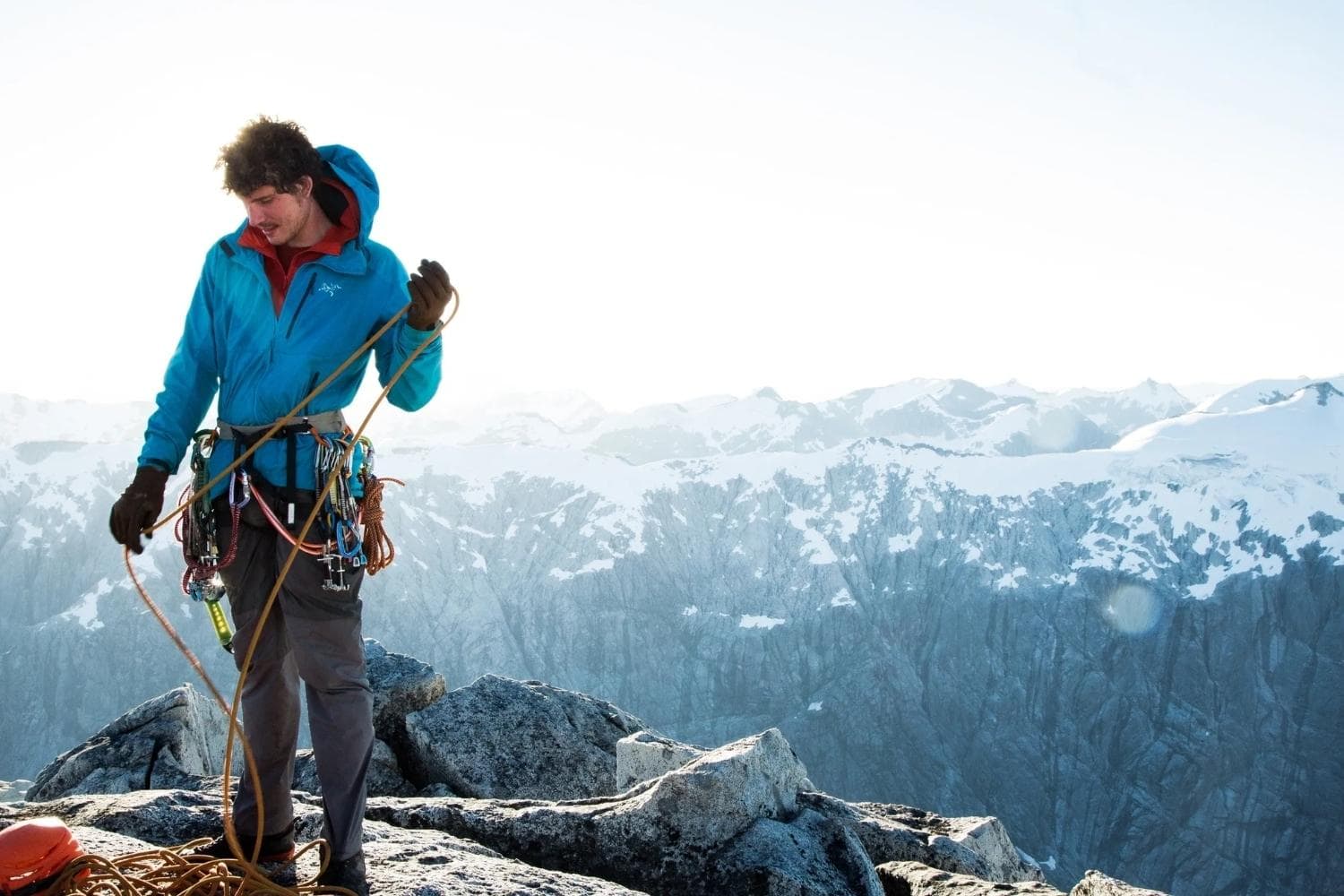
Published on: 03/20/2022
With the 2021 release of the film, The Alpinist, Marc-André Leclerc has become a well-known figure in the climbing world. But things could have been different. Reclusive by nature, uninterested in celebrity, and not fond of cameras, Marc-André was happy climbing in relative obscurity at an extraordinarily high level. And it might have stayed that way.
Even when people began to take notice around 2015, Marc-André’s focus remained on climbing for the love of it. His enduring legacy might have as much to do with this attitude as his achievements. The pursuit of adventure was his priority. He wasn’t motivated by wealth, fame, or climbing magazine coverage despite his prodigious talent. We thought we’d take a look at the life of Marc-Andre Leclerc – a true dirtbag (in the best possible sense) and the epitome of what it means to be an alpinist.
Early Life

Marc-André Leclerc was born on October 10th, 1992, in Fraser Valley, Nanaimo, BC, Canada, to Michelle Kuipers and Serge Leclerc. He was diagnosed with ADHD and struggled in his early years at school. This led to his mother homeschooling Marc-André for most of his elementary education. His mother would often wrap up these formal lessons early, taking her son to the mountains or forest to identify rocks and plants. These experiences had a lasting experience on the boy.
His love affair with climbing began when his grandfather gave him Chris Bonnington’s book, Quest for Adventure. The images of tiny humans as they climbed the vast faces of snow and ice had a profound impact, fueling the child’s imagination. His first climbing experience came via a wall in a shopping mall at age nine. Then later that year, he joined a gym called Project Climbing in Abbotsford, British Columbia, and started climbing regularly.
In 2005, Leclerc’s family moved to Agassiz, near the Cascade Mountains. Here, Marc-André began to teach himself how to mountain climb by biking out to the Harrison Bluffs and spending the night there. He started alone, in tennis shoes, and with little formal training. Eventually, Leclerc and a friend taught themselves piton craft and rope systems from old books.

Then when he was 15 years old, his mother bought him a copy of Mountaineering: The Freedom of the Hills, inspiring him to join the British Columbia Mountaineering Society. Soon, Marc-André began entering competitions and dominating in his age bracket. After graduating high school, Leclerc moved to the Candian climbing mecca of Squamish BC.
Here, he found a home among the misfits in the climbing community. For several years, the dirtbag lifestyle, challenging routes, and partying kept him busy. He spent time living in a stairwell, which became better decorated after meeting his girlfriend, Brette Harrington – herself an accomplished free soloist. The two would form a bond that would help Leclerc fall in love with climbing all over again. Their many climbs together are documented in the film. It’s both heartbreaking and its own kind of beautiful.
Climbing Style and Speciality
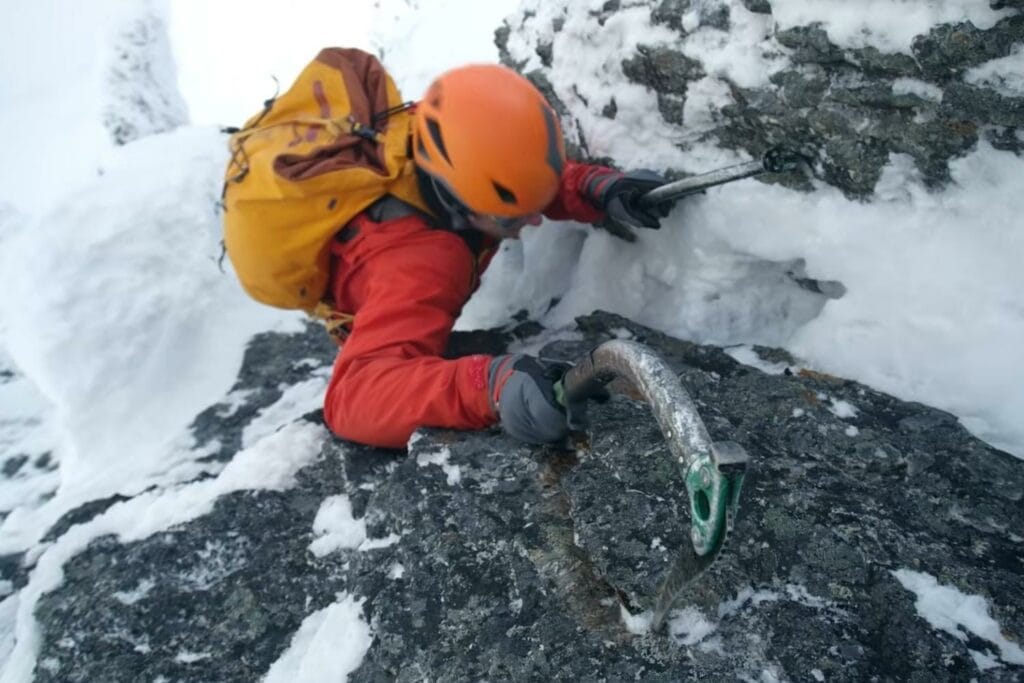
Like Alex Honnold, Marc-Andre Leclerc will probably be remembered (outside the climbing community) for his free solo climbs and first solo ascent achievements. But watching him climb in all seasons and terrifying conditions, it’s clear that his approach and arsenal of skills are different. Marc-Andre was committed to the moment and all about the adventure. This latter part made him ready and willing to switch between mediums. Rock, ice, snow – Leclerc would climb all in a single ascent and any weather. His specialty was alpinism. All of the skills needed to find a new route up some terrifying wall of rock and ice made him a near-peerless alpinist.
Watching any other rock climber execute a free solo ascent gives me anxiety – I can’t wait for it to be over. Watching Leclerc feels different – he looks like he’s having fun. He switches freely between climbing with his bare hands and ice axes even in the most challenging situations. Marc-André’s movements look unlaboured and (almost) free of consequence. His climbing is an expression of joy. And if climbing is an art, this young man was undoubtedly a master.
When watching Marc-Andre climb or listening to him speak about the mountains, his pure, joyful attitude shines through. As climbing grows and more kids experience it as a competitive sport in a gym environment, Leclerc offers a different vision. In the words of Alex Honnold:
“[Leclerc’s] soloing wasn’t about the athletic activity, it wasn’t about sport. It was about a spiritual commitment to adventure.”
But apart from this less tangible quality, Marc-André Leclerc had no shortage of remarkable feats in his brief, bright career as an adventurer/explorer (from what we’ve seen, we guess he’d prefer these titles to “climber”). In an increasingly fragmented and specialized sport, Leclerc will be remembered for merging all styles at the highest level and in the sketchiest situations – often with a big grin.
Notable Feats
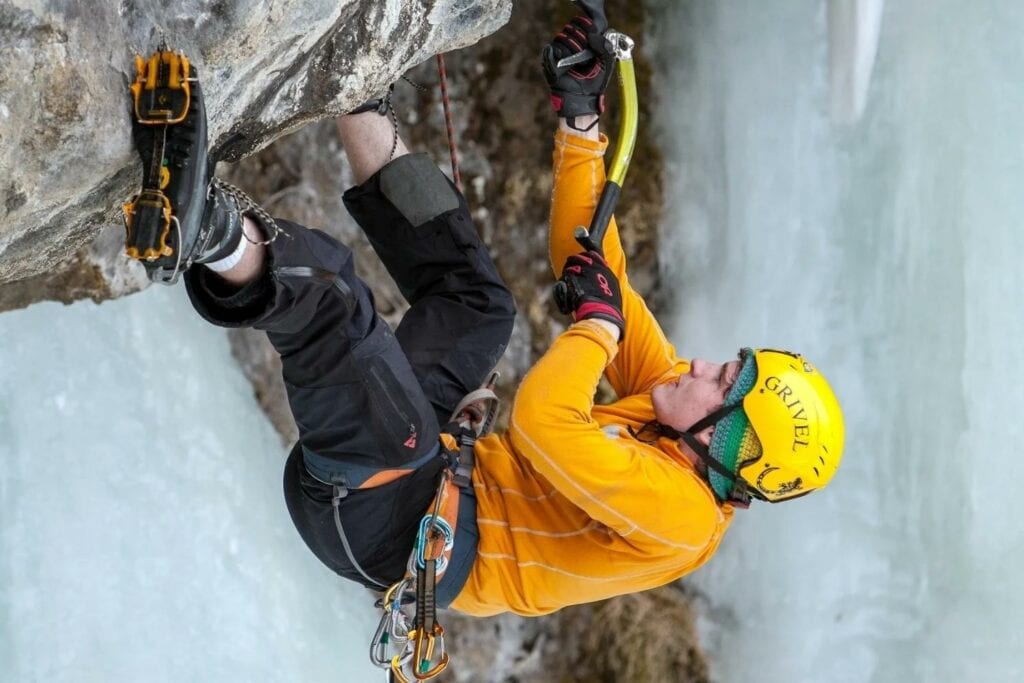
There’s a problem with any “notable climbs” section for a guy like Leclerc. He shied away from the limelight, so we don’t know about many of his exploits. Only those he chose to talk about, were witnessed by others, or were picked up by a rock climbing magazine can be listed. Honestly, we think this is fitting. Maybe he sent all kinds of routes no one’s ever even heard about.
2013 – Grand Wall Speed Free Solo Ascent Record
With a time of 57:30, Leclerc narrowly beat Alex Honnold and Mason Earle’s previous time of 59 minutes. Honnold was impressed enough to return next year and smash the record into oblivion – “(Leclerc) had broken a speed record I’d set… so I planned to retake a couple of things,”
Honnold certainly did that, sending a time of 38 minutes – a record likely to last a while. Beating Honnold may have helped bring Leclerc some initial attention.
2013 – First Free Ascent, The Temptation of St Anthony, North Walls, The Chief, Squamish, Alaska – 5.13R/X
Known for its huge runouts and terrifying fall potential, Leclerc calls this route – “one of the great lines of Squamish in my fully biased opinion.” Of this six-pitch climb, Leclerc wrote, “pitch four is a contender for one of the boldest leads on The Chief.” Around this time, climbing magazine interest in Marc-André Leclerc began to grow.
2014 – First Free Solo Link-up, East Pillar Direct 5.10+, Navigator Wall 5.10+, and Northeast Buttress 5.9+, BC
Though he had previously free soloed the Northeast Buttress, Leclerc wanted to complete it and two other routes in a single day. In August of 2014, he did just that. Alone and without a rope, he topped out all three routes in under 12 hours – an extraordinary mental and physical endurance feat.
2015 – First Ascent, Directa de la Mentira 5.10, North Face of Cerro Torre, and First Reverse Traverse of la Torres, Patagonia
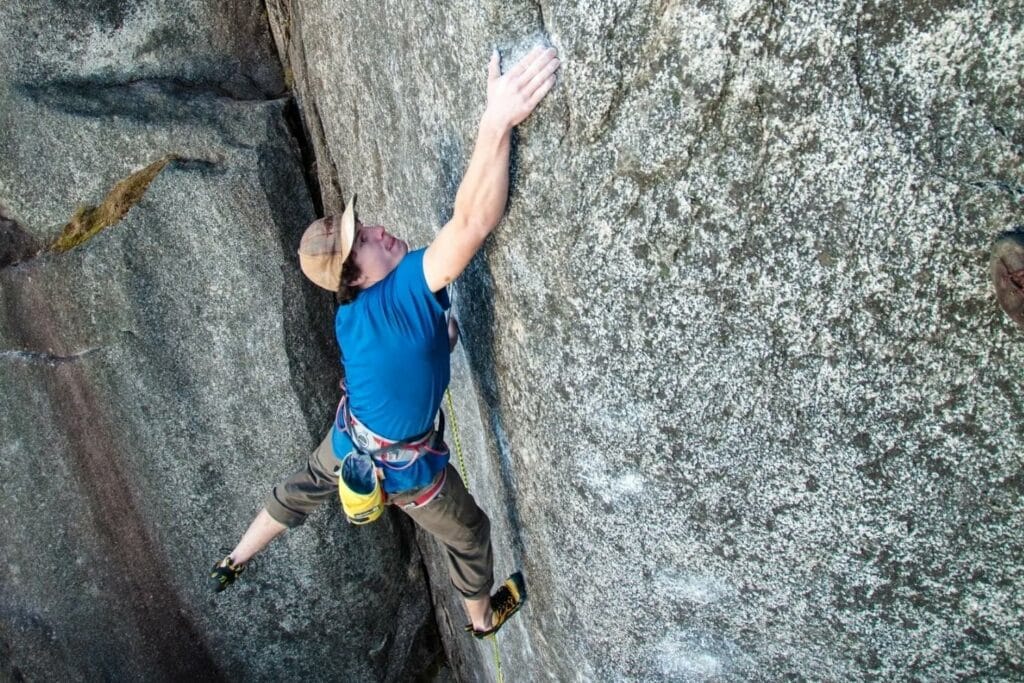
On his first trip to Patagonia, Andre Leclerc showed his willingness to attempt unclimbed routes. He and his climbing partner Colin Haley used ropes to make these first ascent records on three routes on the north face of Cerro Torre in March of 2015.
2015 – First Solo Ascent, The Corkscrew 5.10d, Cerro Tore, Patagonia
Argentinian climber and mountain guide Rolando Garobotti said Leclerc’s ascent of The Corkscrew linkup was one of – “earth-shifting proportions, by far the hardest route ever soloed on Cerro Torre and only the seventh solo overall.” This mainly was a free solo climb, made with only a short rope and often zero protection.
Brette Harrington was on this trip and soloed the Chiaro di Luna route, netting her the first-ever female solo ascent in Patagonia.
2015 – Free Ascent, Muir Wall, El Capitan, Yosemite
Along with climbing partners Brette Harrington and Alan Carne, Marc-André took on this beautiful 33-pitch route without a top rope. This is a long (4 days), demanding climb with lots of technical sections – a free ascent like this is a rarity.
2016 – Established the Route Hidden Dragon on the Chinese Puzzle Wall with Brette Harrington, Cascade Mountains
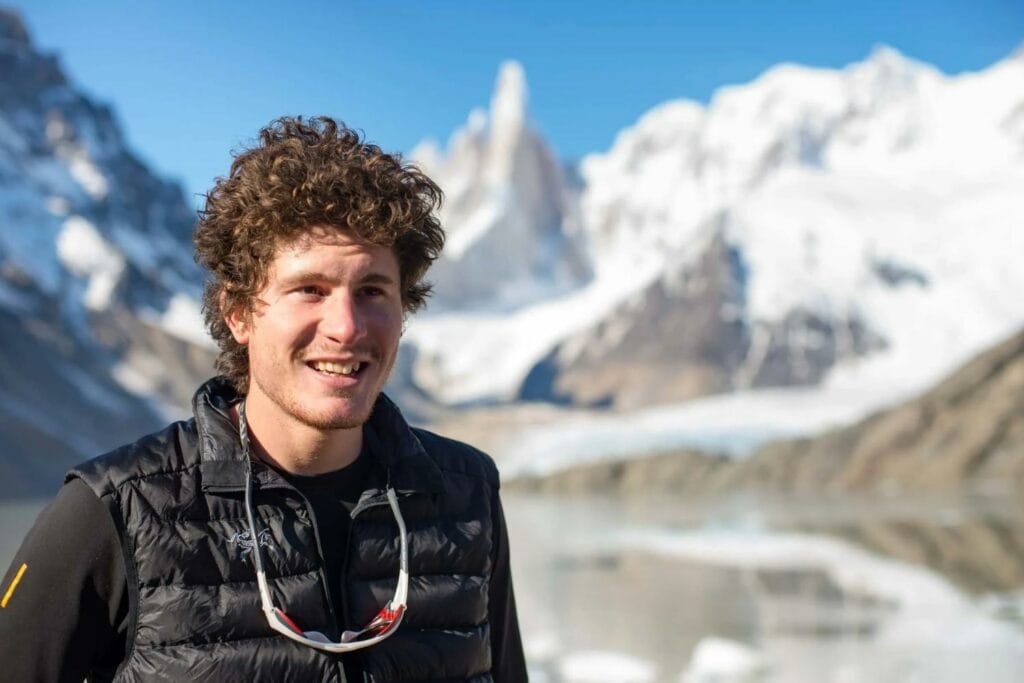
The Chinese Puzzle Wall across from Mount Slesse in the Cascade mountains is named for its complex series of cracks and roofs. In 2016, Marc-André Leclerc and Brette Harrington spent eight days establishing their new route, Hidden Dragon 5.12b, before making the first ascent.
2016 – Established Two New Routes up Great Sail Peak with Brette Harrington on Baffin Island
This trip involved traveling by snowmobile across the breaking ice of a frozen bay to the eastern fjords of Baffin Island. The route is impressive, but so is the setting and location. Rock and ice mix in equal measure on the terrifying ascent. Check out André and Brette’s vlog of the trip at the link below for some scary ice climbing content.
2016 – First Solo Ascent of the Infinite Patience Route on Mt. Robson’s Emperor Face
Of this route, Leclerc wrote – “(I) was intimidated by (the Emperor’s) strong aura, but in the end, we became friends, and the King generously shared his wealth, leaving me a much richer person indeed.” In the same blog post, he also wrote about Emperor Face – “the bigger and deeper the experience the more difficult it is to write about.” This is something all of us can understand – even the non-climbers.
2016 – First Winter Solo Ascent, East Pillar, Torre Egger, Patagonia
This is a dangerous face at the best times, especially in winter. Only one winter attempt had been successful before, and never a winter solo ascent. This represented one of Leclerc’s most daring climbs, switching between rock and ice without the support of other climbers. His first winter solo ascent of Torre Egger is a testament to Marc-André Leclerc’s toughness and ability.
2017 – First Free Solo, Tall Storey 5.11c, Echo Canyon, Alberta
At 5.11c, Tall Storey is no easy sports route. It’s over 600 feet, seven pitches, and a lot can go wrong on the way up. This made it one of the highest-rated and most challenging free solos of Marc-André’s career.
2018 – First Ascent, the North Face of the Main Tower of Mendenhall Towers, Alaska
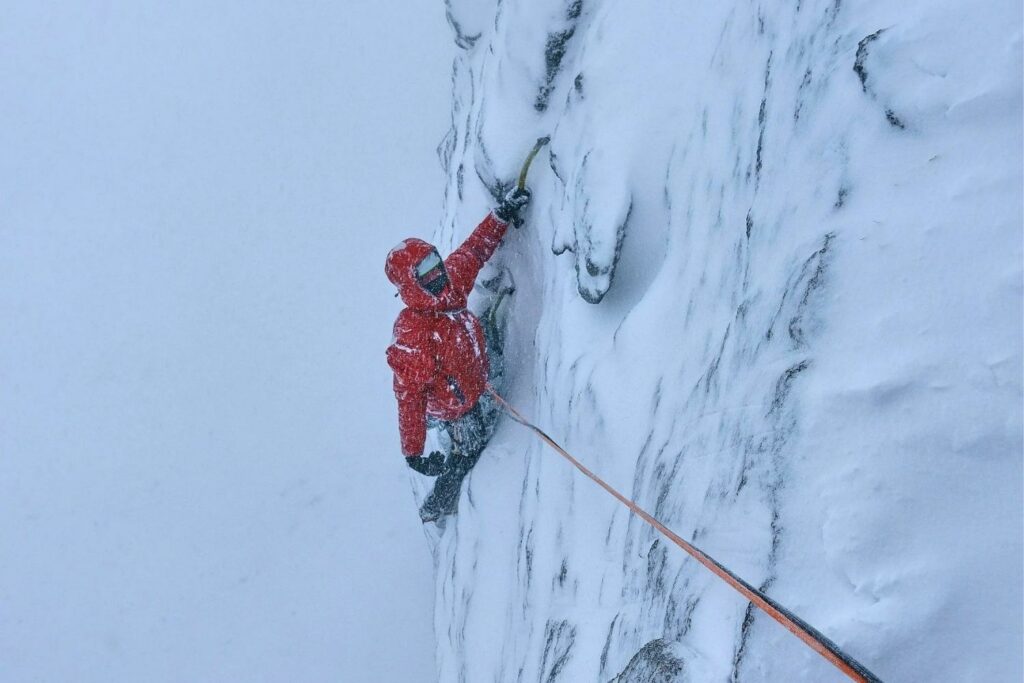
Ryan Johnson had been planning this 2,500-foot route up the main tower of Mendenhall Towers for several years before he found a willing and capable partner in March 2018. The entire route is challenging, with the final 750m being an unpredictable mix of ice, snow, and rock. Leclerc and Ryan Johnson topped out the route and were surprised to find they had cellphone reception. The pair shot several videos and posted a few online before beginning their descent. They were dues back at base camp by March 7th. Neither ever returned.
The Alpinist
Directors Peter Mortimer and Nick Rosen were no strangers to the rock climbing documentary when they started working on The Alpinist. Both had previously worked on classics like Valley Uprising, First Ascent, The Dawn Wall, and the Reel Rock series. But as plugged into the climbing world as these two climber-directors were, neither knew much about Marc-André Leclerc. All they had to go on were secondhand stories from other elite climbers. And these stories told of a prodigious talent.
Free soloing had seen a surge of interest after the release of the documentary Free Solo. Mortimer and Rosen realized that an unknown climber performing at that kind of elite level for the fun of it would make a compelling story. Both filmmakers believed the mysterious climbing of Marc-André Leclerc was worth shining a light on.

The Alpinist is a fascinating portrait. His climbs are as nerve-shredding as any ever caught on film, but Marc-André Leclerc’s relationship to the sport of climbing is the real star. We’re not even sure that sport is the correct word in this context. Every once in a while, you see an athlete moving with the kind of animal grace most humans are too self-aware to achieve. This, and the personality behind it, are the best aspects of The Alpinist. It features rock and ice climbing from Leclerc and Harrington and commentary from Honnold, Scott Serfas, Reinhold Messner, and Barry Blanchard – amongst others. Recommended viewing!
Death
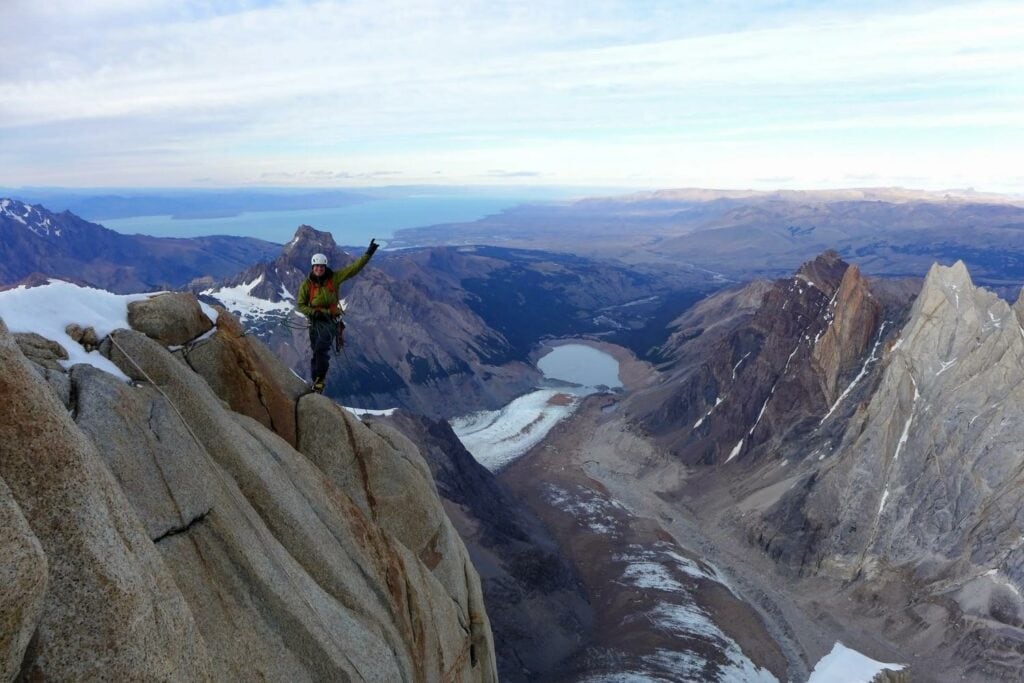
Marc-Andre Leclerc and his climbing partner Ryan Johnson died between March 5th and March 7th, 2018. After topping out a new route on the north face of the Mendenhall Towers in Juneau, Alaska, the two climbers began their descent. What happened to them next is speculation.
When Marc-André’s girlfriend hadn’t heard from him at the expected time, she raised the alarm. She had said goodbye to Marc-André days earlier after the pair had made the first ascent of a peak called Station D in British Columbia. Brette then flew to Tasmania to meet some friends and enjoy warmer weather.
Back in Juneau, Mountain Rescue began the search but had to call it off due to bad weather. When the storm passed after four days, a helicopter crew spotted an orange climbing rope at the bottom of the climbers’ intended descent route.
A helicopter crew member used a Recco detector, a search and rescue machine that emits a directional radar signal. This signal bounces off metal and special tags built into survival clothing and equipment. With this device, they located a signal from a piece of climbing equipment or metal about fifteen feet under the snow. It lined up with where the two climbers would have been if caught by an avalanche.
We’ll never know whether a rock fell, a cornice broke off, or falling ice caused an avalanche. It’s assumed an avalanche overtook them as they descended, burying both men. Their bodies were not recoverable without risking another avalanche and the lives of rescuers. This may be possible in the future if there’s significant thawing.
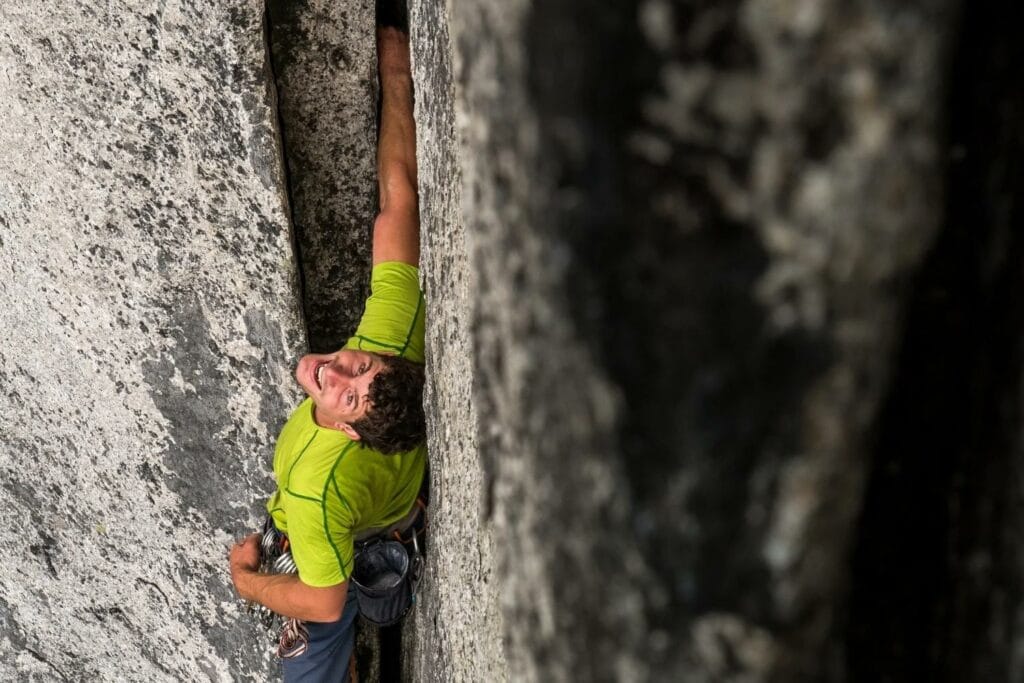
Legacy
Marc-André Leclerc will go down in history as a pioneering alpinist, an adventurer, and a master of rock and ice. And also something of an enigma. A lot of his best work was done alone and without a camera. It’s beyond my remit to say what Marc-André Leclerc will become in terms of legacy. He climbed at the highest level, across disciplines, and for the highest stakes. But he didn’t do it for medals, magazine coverage, money, fame, or attention. He climbed because it made him feel good.
I was going to close this out with a somber quote from Leclerc himself. But I decided against it. Instead follows a quote from his blog post after topping out the East Ridge, Navigator Wall, and Northeast Buttress of Mount Slesse in just over 12 hours –
“I feel like a cat, I feel like a ninja! I feel like a ninja cat! An ALPINE ninja cat!”
That’s a hell of a feeling, pal. RIP



I had watched the Alpinist and enjoy that except for the tragic end so wanted to learn a little more. Thank you so much for taking the time to do this and providing the Baffin Island video. Can you recommend a basic book to explain some of the Terminology for climbing? I didn’t understand at all.
Yours truly,
Mary
Hi Mary,
Thank you for your comment – really happy to hear you enjoyed the article!
For terminology, please check out these articles that go over some of the terminology:
https://climbinghouse.com/how-to-start-rock-climbing/
https://climbinghouse.com/bouldering-vs-rock-difference/
https://climbinghouse.com/trad-vs-sport-climbing-differences/
If you’re looking for a book to help you as a beginner, 9 Out of 10 Climbers Make the Same Mistakes by Dave Macleod is very popular.
If you’re more into the adventure side of climbing (rather than purely learning techniques), Eiger Dreams by Jon Krakauer will give you a compelling overview of mountaineering and the different types of climbing (e.g., ice climbing, bouldering, rock climbing) through incredible climber stories.
We are actually working on an article on the best rock climbing books, so we’ll make sure to add it to these comments once it’s ready.
Hope this helps!
Best,
Gab
What an inspiration! Tragic ending, however!
No doubt Marc is the best free solo climber ever – the best among the best !
I am sure he is meeting in heaven with Alex Honnold, Dean Potter and other free solo climbing legends.
R.I.P. Marc !
Best documentary ever. Can see his smile. Haunts me. Watched it over 10 times. Wish they could recover his body. What a guy!!
What a great documentary. Directors should get a medal! His climbing technique was so fluid it took SOME of the anxiety out of watching. Having only summited the Grand Teton, with a lot of rope, made me appreciate his skills. Made me remember the adage, “relax your mind”.
Marc lived and walked his own path. He’s an inspiration in so many ways…